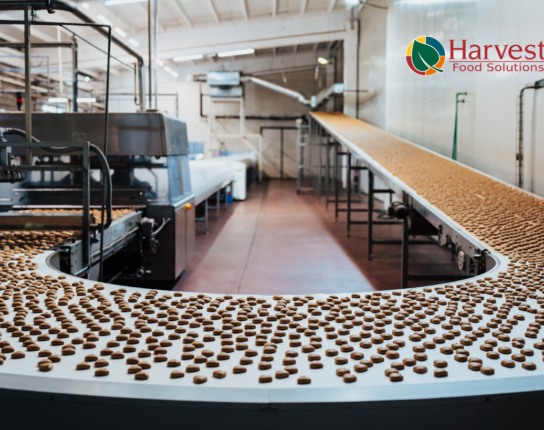Prices of food commodities have seen a staggering increase of 40% year-on-year, according to the FAO. This is the highest level in a decade, with prices of raw materials like grains, vegetable oil, meat, dairy, and sugar all reaching new heights. The US Department of Agriculture concurs, stating that “all food prices are expected to increase in the coming months.”
Farmers are facing a myriad of challenges, including fertilizer shortages, drought and adverse weather, along with a US bird flu outbreak that’s killed almost 10% of the country’s egg-laying hens. Plus, the war in Ukraine and its effect on fertilizer supply and fuel markets only exacerbate the problems.
The increase in price of oil has caused the price of packaging and transportation to become significant cost considerations for food manufacturers as well, with some examples being:
- Paper pulp: +60% for hardwood and 21% for softwood
- Diesel fuel: +19%
- Gasoline: +12%
- Aluminum: +11%
This is alarming but unfortunately not surprising news to food manufacturers, who have been grappling with the increased cost of raw materials. And after many months, previous strategies to adjust costs are running out of steam.
Incoming raw materials have two volatile costs: lead time, and vendor costs. And food manufacturers know to manage those into their inventory projection and forecasts.
But it’s much easier said than done.
Here are some tactics food manufacturers can employ to help them battle the rising costs of raw materials:
Manage food inventory
Plan and buy in bulk where possible – look at your supply chain and order early, understanding that they may take longer to fill. If this creates a cash constraint, discuss your financing options with suppliers or third-party lenders. In some cases, companies may wish to seek alternative sources for ingredients and packaging materials. The last thing you want to see in your books is salt which is many times the price than you could get from another supplier. Or alternatively, this may require identifying alternative ingredients that may be substitutable under the FDA’s policies until supply chains are flowing smoothly again.
Food manufacturers are playing a constant game – where you need to have enough in stock so that you don’t need to shut down production, but you also don’t want to be sitting on a 6 month supply of an ingredient either.
Some businesses, perhaps even yours, may utilize manufacturing resource planning or material requirements planning (MRP) to help with manufacturing activities and product planning. However, these types of systems are used as separate, independent products (silos), whereas an ERP solution is integrated throughout all business systems and modules. Moving beyond separate MRP systems to the robustness of an integrated system, like HarvestERP, will promote flexibility within your business. This flexibility then leads to better functionality and project management.
Managing price increases
The first plan of action is to reduce costs by managing your supply chain, adjusting your production schedule or limiting product variety. But at some point, you may need to increase the retail price.
Knowing the costs of your raw materials and what proportion of the overall cost they contribute to is vital to calculating when and by how much to increase the price by. The prices of raw materials tend to be in a constant flux – becoming almost like white noise for manufacturers, so it can be easy to lose sight of when the price adjustment should happen. E.g. bakeries tend to know when the price of flour goes up – with it being the primary ingredient for their products, but lose visibility for the more minor ingredients. Having a system in place that easily tracks and analyzes these fluctuations helps make such decisions much easier, with data to back them up.
Just suddenly increasing your prices is a bad idea – both for your manufacturing process and for your relationships with retailers and customers. And with large retail customers, it may not even be an option. Provide plenty of lead time, and ensure the price increase isn’t conflicting with any other campaigns. If possible, expose your detailed costs to the customer so that they can see the increase in raw material and labor costs that need to get passed on downstream.
Know the ins and outs of your business
With better visibility on costs, food companies can better respond to necessary price changes or use raw material cost pressures to justify better order conditions with customers. This is especially true with freight costs. But you need to price smartly.
Harvest has a dynamic financial management feature that gives teams the tools and visibility needed to provide fast and accurate performance. It allows you to bring more clarity to your financial performance while also reducing your closing time. Here are the features that assist with the finances:
- Costing: Enhanced costing routines allow you to quickly and easily identify your product component costs.
- Receivables: Improve cash forecasting and reduce transactional processing costs.
- Purchasing: Powerful tools designed to track and recommend a purchasing strategy. You can manage price, ordering guidelines, delivery requirements, and allergen controls in one spot.
- Cash Flow: By automating systems and consolidating data, you can get cash faster to support expenses and other business decisions.
- Reporting: Advanced reporting capabilities allow you to design reports to meet business needs.
- EDI Integration (electronic data interchange): Send and receive electronic invoices, credit memos, sales orders, and shipping notifications using the document exchange service.
Take charge of your supply chain management. Harvest Accounting & Operations put supply chain data in your hands, right where you need it. Plan your raw material and packaging needs on-demand; track production line scheduling; manage delivery schedules — all in one place.
Interested in learning more about Harvest Food Solutions and how we can help your food manufacturing business? Contact us to see a demo of our software and how it can make an impact on your business.










